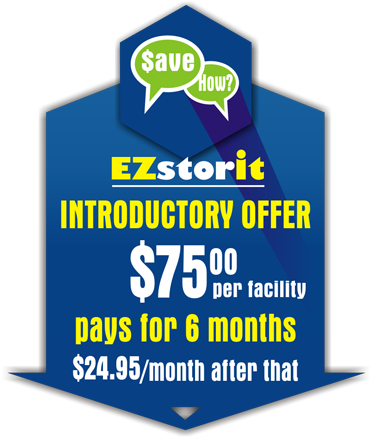Nov
02
How to Organize Your Business Inventory in Storage
02

Whether your business is large or small, you may find that you are unable to accommodate the bulk of your inventory at your retail location. Alternatively, you might not have a dedicated retail location if you merely manufacture products and you contract with distributors to sell it or you rely solely on an online store for sales.
Of course, maintaining a storage warehouse may be beyond your means, and you simply may not need that much storage space. In this case, using a self-storage facility could provide the perfect solution. It will certainly save you money over leasing or buying additional retail or warehouse space.
Once you rent out a self-storage unit, you must then determine how best to organize your business inventory in the space available to you. It's not like your personal storage, where you can take your time pawing through unlabeled boxes in search of kitchen utensils or extra linens.
You need to be organized so that it is quick and easy to access your inventory as needed. Here are just a few tips for getting your inventory organized in storage for the benefit of your business operations.
Compartmentalize
Before you put even one item of inventory into storage, you need to set up your space for optimal organization ahead of time. This will help to ensure that you don't end up having to dig through stacks of boxes to find what you're looking for.
Organization of inventory begins with installing appropriate shelving. You can certainly purchase pre-made shelving units, but you might want to customize shelving depth, width, and/or height to perfectly accommodate your products or product packaging, just for example. Alternately, you may simply use bins on shelving to hold parts or products, depending on your business and what you manufacture.
The point is that you want to make the most of you available space, and this means putting some thought into how your products will fit on the shelves you install. Proper compartmentalization will help you maximize your use of space, as well as maintain an organized system of storage for your inventory.
Cataloging
Once you have your organizational infrastructure in place, it's time to consider your inventory management system, or how you will catalog and arrange your inventory. This begins with coming up with a system for labeling boxes of inventory so that employees can see at a glance what's inside without having to open every box on a shelf. A barcode system is also wise for identification and tracking purposes.
From there you have to devise a system of organization that makes sense for your business and your storage space. Generally, this revolves around storing items by type, rather than, say, alphabetically, just for example. Again, it depends on your particular inventory and what makes the most sense for your business.
Popular Item Storage
For many businesses, there is a general rule of thumb when it comes to inventory: about 20% of your products tend to make up about 80% of your sales. For this reason, it makes sense to place the most popular items at the front of your storage space, where you can gain the quickest access.
Other items that don't sell as frequently or in the same volume can be stored further back, since you won't have to access them as often. If you operate with more than one storage unit, you should consider setting aside a dedicated space only for your most popular items, for the sake of convenient access.
Apps
You can certainly memorize an inventory management system and then train new employees in how to properly store and access your inventory. However, there's no need in this day and age to manage your entire inventory on paper. In fact, this antiquated system is not only unnecessarily difficult, but it's also not very secure.
It's time to upgrade to a digital inventory management system, and there are several mobile applications that can make the job easy. You'll almost certainly want to integrate barcode scanning technology to facilitate tracking and stock audits, as well as search functionality. Features that notify you when you're running low on inventory are also useful, as are reporting tools.
You should do some research on the apps that are going to work best for your business, but you may want to start by looking into popular options like Stock Control, Goods Order Inventory, SOS Inventory, and On Shelf, just to name a few.






